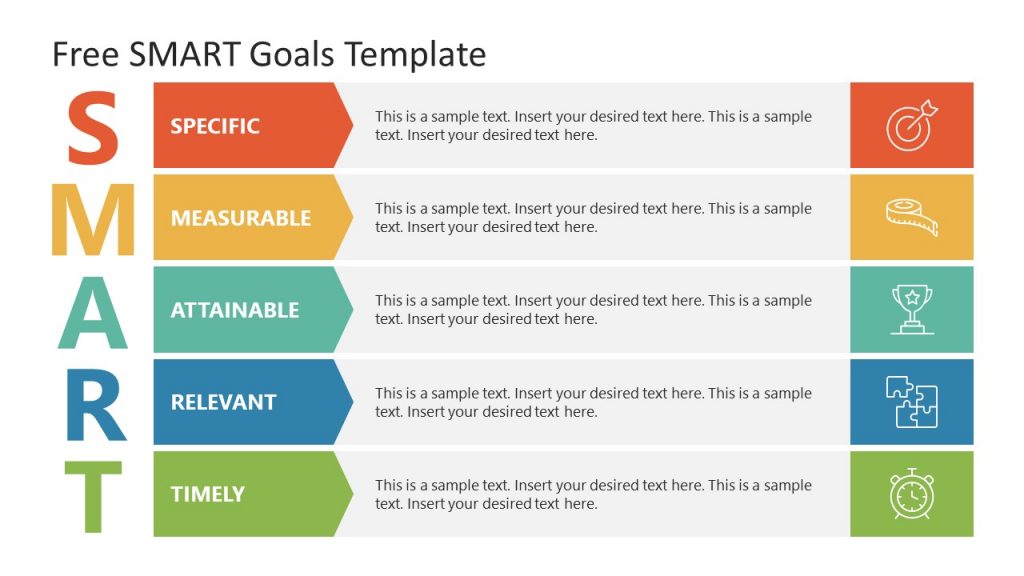- 833-952-4370
- [email protected]
- Huntington Beach, California
A treasure trove of valuable insights and expertise from a seasoned entrepreneur and business leader

Leadership SMART Goal Examples illustrate the power of setting Specific, Measurable, Achievable, Relevant, and Time-bound objectives. The following 10 examples not only serve as inspiration but also demonstrate how well-defined goals can propel leaders and organizations toward their desired outcomes. Whether it’s enhancing employee engagement, fostering diversity and inclusion, or improving decision-making processes, these SMART goals are designed to guide leaders toward excellence and innovation.
A Leadership SMART Goal is a carefully crafted and strategic objective that leaders set to guide their actions and achieve specific outcomes. SMART is an acronym that stands for Specific, Measurable, Achievable, Relevant, and Time-bound. Each component of a SMART goal ensures clarity and effectiveness in goal-setting:
Specific: The goal is clear, well-defined, and focused on a particular leadership area.
Measurable: It includes quantifiable metrics to track progress and determine success.
Achievable: The goal is realistic and attainable given available resources.
Relevant: It aligns with broader leadership objectives and organizational goals.
Time-bound: It has a specific timeframe or deadline for completion.

A Leadership SMART Goal is a carefully crafted and strategic objective that leaders set to guide their actions and achieve specific outcomes.
Leadership SMART goals help leaders enhance their effectiveness, drive personal growth, and contribute to organizational success through clear and actionable objectives.
Goal: “To enhance team communication by conducting weekly status meetings for all team members.”
Specific: The goal is to establish regular meetings to discuss project updates and address any communication gaps.
Measurable: Progress will be tracked through meeting attendance and the reduction of miscommunication instances.
Achievable: The goal is attainable with existing resources and requires only a small time commitment.
Relevant: Improved communication is vital for efficient teamwork and project success.
Time-bound: Weekly meetings will begin within one month.
Why does this SMART goal help?: Effective communication is fundamental to a team’s success. This goal ensures everyone is on the same page, minimizes misunderstandings, and fosters a more collaborative work environment.
Strategies:
Create a meeting schedule and share it with team members.
Set an agenda for each meeting to keep discussions focused.
Encourage open dialogue and active participation.
Use collaboration tools to document meeting minutes and action items.

Goal: “To increase employee engagement by implementing a monthly recognition program.”
Specific: The goal is to establish a program that recognizes employees for outstanding contributions.
Measurable: Success will be gauged by increased employee satisfaction scores and participation in the program.
Achievable: The program can be implemented using existing resources and budget.
Relevant: Employee engagement directly impacts morale and productivity, aligning with organizational goals.
Time-bound: The program will launch within two months.
Why does this SMART goal help?: Enhancing employee engagement is paramount to fostering a thriving workplace environment. Engaged employees not only exhibit higher levels of job satisfaction but also demonstrate increased commitment to their roles and the organization as a whole. Recognized employees often feel more appreciated, which can lead to improved morale, greater enthusiasm, and a positive impact on overall workplace culture. Moreover, an engaged workforce tends to be more productive and has a lower likelihood of turnover.
Strategies:
Develop a recognition program framework.
Communicate the program’s launch and guidelines to all employees.
Encourage peer-to-peer recognition.
Monitor participation and gather feedback for continuous improvement.

Goal: To enhance leadership skills by completing a leadership development course within six months.
Specific: The goal is to enroll in a recognized leadership program to acquire new skills and knowledge.
Measurable: Progress will be assessed through course completion and application of learned skills.
Achievable: The program aligns with available resources and time commitments.
Relevant: Strong leadership skills are essential for effective leadership roles.
Time-bound: The course will be completed within six months.
Why does this SMART goal help?: Completing a leadership development course within a defined timeframe signifies a proactive commitment to personal and organizational growth. The importance of this goal lies in its ability to equip leaders with the knowledge, tools, and strategies needed to navigate the complex challenges of their roles effectively. As leaders acquire new skills and knowledge, they become better equipped to make informed decisions, communicate effectively, and lead teams to success. Ultimately, the impact of enhanced leadership skills extends beyond individual growth; it can positively influence the entire organization’s culture, performance, and success.
Strategies:
Research and choose a reputable leadership program.
Create a study schedule and allocate dedicated time for learning.
Apply newly acquired skills in daily leadership activities.
Seek mentorship or coaching to reinforce learning.

Goal: “To contribute to organizational growth by increasing market share by 10% within one year.”
Specific: The goal is to focus on expanding market presence and capturing a specific percentage of the market.
Measurable: Success will be determined by tracking market share growth over the year.
Achievable: With the right strategies, resources, and team efforts, a 10% increase is achievable.
Relevant: Organizational growth is a key objective that aligns with long-term goals.
Time-bound: The 10% market share growth will be achieved within one year.
Why does this SMART goal help?: It reflects a commitment to not only maintaining current operations but actively expanding and outperforming competitors in the market. The importance of this goal lies in its potential to drive significant revenue growth, enhance the organization’s competitive position, and secure a larger portion of the market. Achieving this goal requires a focused and coordinated effort across sales, marketing, and operational teams. It signals to stakeholders, including investors and employees, that the organization is poised for success and committed to seizing opportunities in the market.
Strategies:
Conduct market research to identify growth opportunities.
Develop marketing campaigns to target new customer segments.
Enhance sales and distribution channels.
Monitor progress regularly and adapt strategies as needed.

Goal: “To promote diversity and inclusion by increasing diverse hires by 20% within the next hiring cycle.”
Specific: The goal is to actively recruit and hire individuals from diverse backgrounds.
Measurable: Success will be determined by the percentage increase in diverse hires.
Achievable: With an inclusive hiring strategy, a 20% increase is attainable.
Relevant: Promoting diversity aligns with the organization’s commitment to inclusion and equality.
Time-bound: The goal will be achieved within the next hiring cycle, approximately six months.
Why does this SMART goal help?: Increasing diverse hires by 20% within the next hiring cycle is an important leadership SMART goal as it aligns with broader organizational objectives related to diversity and inclusion. Such a goal fosters a workplace culture that values differences and leverages unique perspectives, which can lead to increased creativity, innovation, and employee satisfaction. Moreover, diverse teams are better equipped to understand and cater to a wide range of customer needs, expanding the organization’s market reach.
Strategies:
Develop an inclusive job posting and recruitment strategy.
Collaborate with diverse community organizations.
Provide diversity training for interviewers and hiring teams.
Regularly review progress and adjust recruitment practices.

Goal: “To improve decision-making by implementing a structured decision analysis process for significant projects within three months.”
Specific: The goal is to establish a structured process for evaluating and making decisions.
Measurable: Progress will be tracked by the successful implementation of the decision analysis process.
Achievable: The resources and expertise required for this goal are available.
Relevant: Effective decision-making is essential for successful project outcomes.
Time-bound: The decision analysis process will be implemented within three months.
Why does this SMART goal help?: First and foremost, sound decision-making is at the core of effective leadership. This not only mitigates the risk of making hasty or uninformed decisions but also enhances the likelihood of achieving desired results. Furthermore, in a rapidly changing business environment, the ability to make well-informed decisions swiftly is a competitive advantage. Additionally, involving key stakeholders in the decision analysis process fosters collaboration and buy-in, ultimately leading to more successful project outcomes. It also encourages a culture of transparency and accountability within the organization.
Strategies:
Identify decision analysis frameworks and tools.
Train teams on the decision analysis process.
Implement the process on a trial basis for select projects.

Goal: To improve team morale and motivation by implementing a monthly recognition program, resulting in a 20% increase in employee satisfaction scores within six months.
Specific: The goal is to establish a monthly recognition program.
Measurable: Success will be assessed by a 20% increase in employee satisfaction scores.
Achievable: The program can be implemented with available resources.
Relevant: Boosting morale and motivation aligns with the organization’s objectives.
Time-bound: The program will launch within one month and will be evaluated at the six-month mark.
Why does this SMART goal help?: High employee morale and motivation contribute to improved productivity and job satisfaction. A recognition program can help achieve these outcomes by acknowledging and rewarding outstanding contributions.
Strategies:
Develop a recognition program framework.
Communicate the program’s launch and guidelines to all employees.
Track and analyze employee satisfaction scores.

Goal: To strengthen leadership skills by enrolling in an advanced leadership certification program within three months, culminating in a successful certification completion.
Specific: The goal involves participating in an advanced leadership certification program.
Measurable: Success will be evaluated upon successful certification completion.
Achievable: The program aligns with available resources and time commitments.
Relevant: Enhancing leadership skills is crucial for leadership roles.
Time-bound: The certification program will be completed within three months.
Why does this SMART goal help?: Leadership skills are instrumental in guiding and motivating teams. An advanced certification program provides leaders with in-depth knowledge and skills necessary to excel in their roles.
Strategies:
Research and enroll in an advanced leadership certification program.
Dedicate time for coursework and study.
Actively participate in program activities.

Goal: To improve decision-making processes by implementing a structured decision analysis system within three months, leading to a 30% reduction in project delays.
Specific: The goal is to establish a structured decision analysis system.
Measurable: Success will be determined by a 30% reduction in project delays.
Achievable: The system can be implemented with available resources.
Relevant: Streamlining decision-making processes aligns with project efficiency goals.
Time-bound: The system will be operational within three months.
Why does this SMART goal help?: Efficient decision-making processes are vital for project success and timeliness. Implementing a structured system can reduce delays and improve overall project management.
Strategies:
Identify and implement a structured decision analysis system.
Provide training to relevant teams on the system.
Monitor project timelines and delays.

Goal: To enhance cross-functional collaboration by organizing quarterly knowledge-sharing sessions, aiming for 100% participation from department heads within one year.
Specific: The goal involves arranging quarterly knowledge-sharing sessions.
Measurable: Success will be determined by achieving 100% participation from department heads.
Achievable: The resources and time required are feasible for this goal.
Relevant: Strengthening cross-functional collaboration aligns with the organization’s objectives.
Time-bound: Quarterly knowledge-sharing sessions will be initiated and maintained for one year.
Why does this SMART goal help?: Cross-functional collaboration is essential for problem-solving and achieving organizational objectives. Knowledge-sharing sessions can foster a culture of collaboration and information exchange.
Strategies:
Schedule quarterly knowledge-sharing sessions.
Coordinate with department heads for participation.
Emphasize the importance of knowledge-sharing.

As you embark on your journey toward effective leadership and goal achievement, remember that Leadership SMART Goal Examples are valuable tools for realizing your potential. By setting clear and actionable objectives, you can lead your team and organization to new heights of success. If you’re seeking further advice on setting and achieving business goals, don’t hesitate to reach out to Barry Bradham, a seasoned entrepreneur in the field. With the right goals and strategies, the path to leadership excellence is within your reach. Contact Barry Bradham now!

A serial entrepreneur, a certificated coach and a dot’com that is eager to share his experience to other business owners.
Barry Bradham Entrepreneur ©️ 2022. All rights reserved.